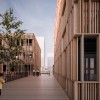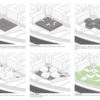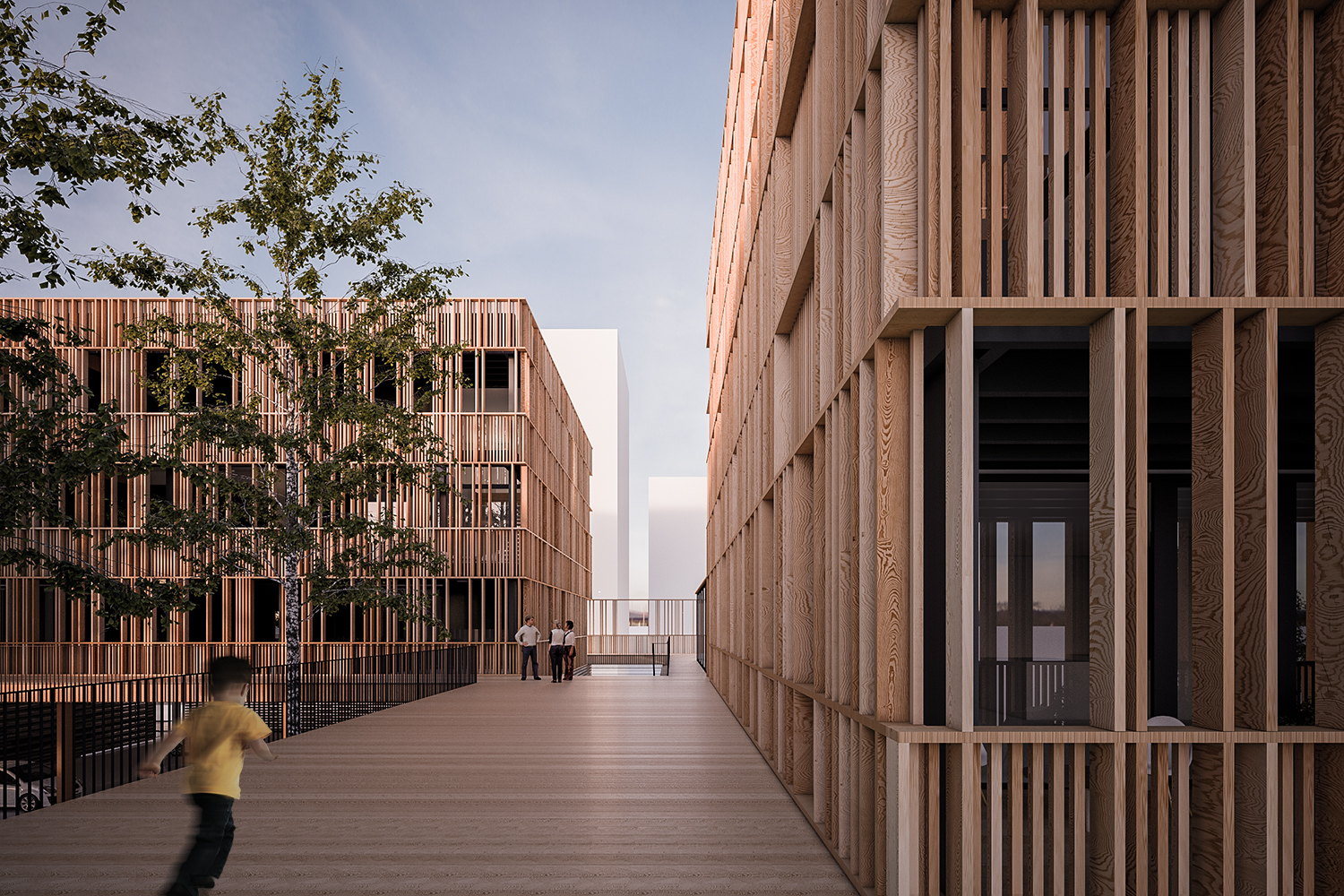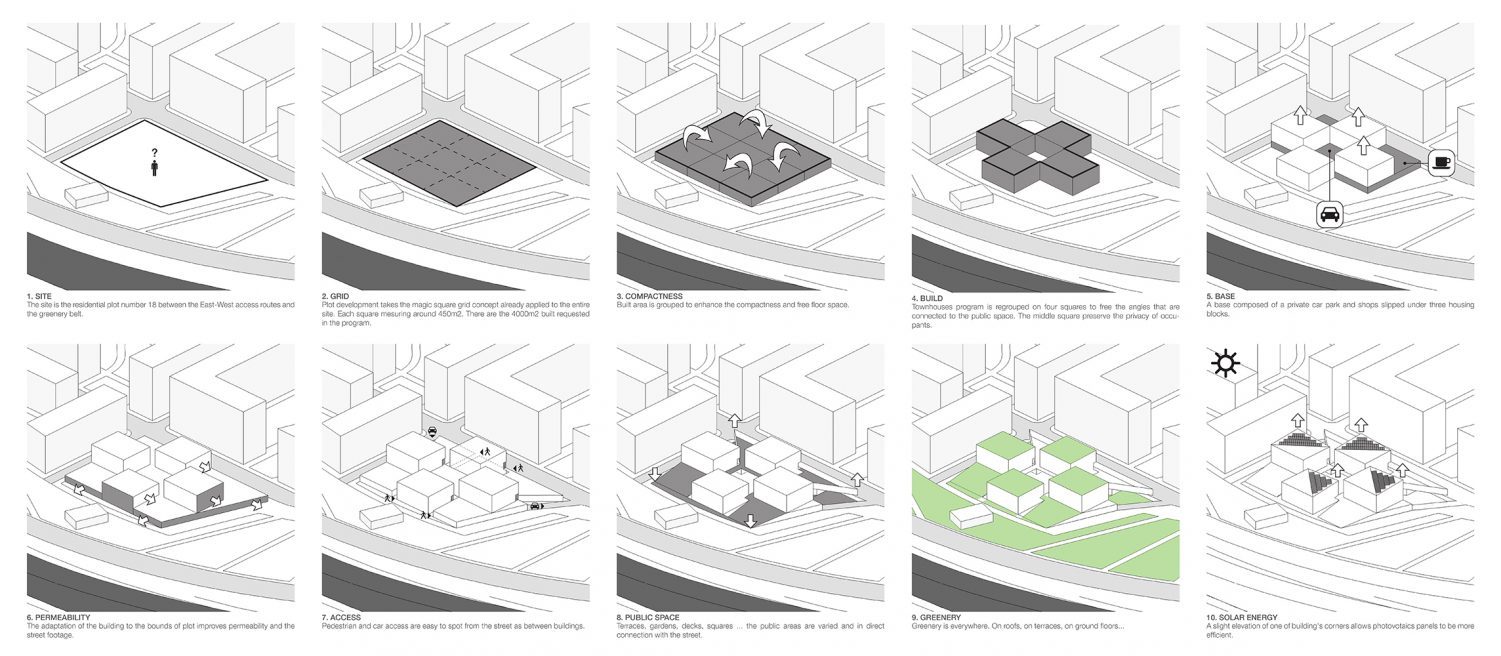Concours Molewa – Aménagement de l’îlot 18
+ Programme:
Aménagement de l’ilôt n°18 – 22 logements + commerces de proximité
+ Lieu:
Ruichang (Chine)
+ Maître d’ouvrage:
Hua Yang Group
+ Budget:
nc
+ Surface:
SHAB: 2 600m²
+ Matériaux:
Béton préfabriqué, Bois résineux
The Grid:
For the general development of the plot, we agreed on the concept of magic square which was already applied to the entire master plan: we thought it was a relevant and interesting proposition in terms of architecture and urbanism, as it ensured a close link between the plot and the master plan.
Cutting the plot this way with only four squares occupied by the townhouses program (Yang axial squares) on the 4,000 m2 surface, as requested, would allow the other squares to connect the plot and the surrounding urban area.
The Base:
The impossibility to create an underground parking space was seen as an advantage to make it “slide” underneath the three blocks and create a sort of base, like urban topography, as if the street was naturally raised. This base is designed like geological layers: it adapts to its urban environment and to the program, as it sometimes follows its borders or reaches further apart to create « events » (Access to housing, parking lots and shops, gardens, decks, squares, etc.). Thus, the base seems « naturally » shaped. Its mineral aspect makes it look even more as if it was connected to the street.
Therefore, the three housing blocks are standing on this base, while the upper side is a shared living space for inhabitants and the public during the day. Restaurants and cafés can have their terrace all along the street.
Townhouses:
Housing units are designed as standardized wooden components, perfectly suited to this scale range. Prefabrication has various advantages: it is known to be time-saving in terms of production, as well as energy-saving and economical.
To avoid the repetitive nature of the units, random wooden skins provide a different identity although they are virtually organized in the same way. Their genes are identical but they all look different.
Wooden skin is continuous around the windows, except for the breach of the opening which allows light to enter the housing units while preserving the abstract volumes aspect. By contrast, at night, light from the housing units is shed on the facades.
Townhouses are designed in three different types, ranging from a simplex to a triplex. The accommodations are original, and they offer great volumes, outdoor spaces and a variety of use.
Keys technologies:
In terms of sustainable development, the major use of wood in our project reduces the impact of construction in terms of CO2 emissions and energy use.
Furthermore, we wanted a close relationship between man and nature: with trees planted in the heart of the plot, vegetation is everywhere in continuity with the green belt, and there is also a small personal green space within the housing unit. Inhabitants may use it to grow vegetables, flowers or plants. Rainwater is used to supply necessary water.
Small-scale production of energy is planned and encouraged with a slight elevation of the roof’s corner to improve the performance of photovoltaic panels.
Conclusion:
To conclude, we imagined a plot that would offer people a unique place to live in, connecting the urban and vegetal contexts and with a great variety of use, which definitely meets current and future expectations.





